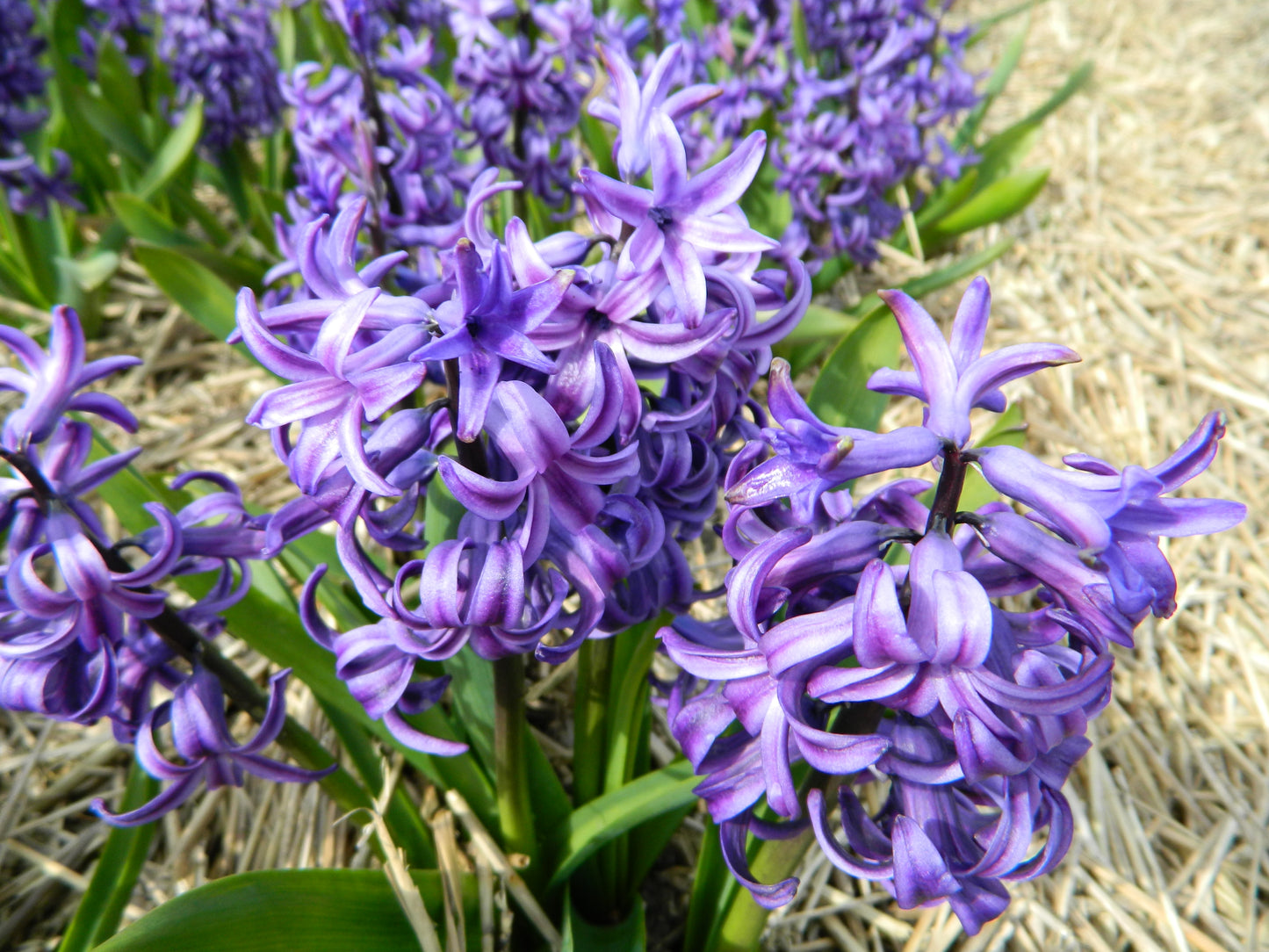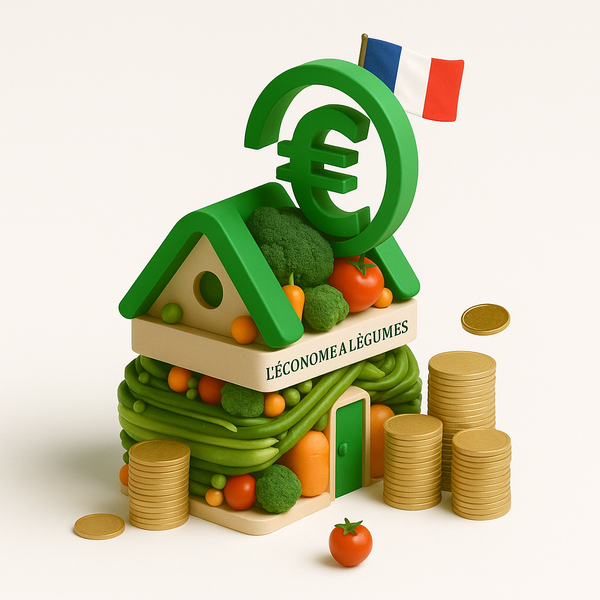-
Livraison dès 10 bulbes France, Suisse et Europe
Modalité livraison -
Grossiste Bulbes de fleurs en ligne
-
Bulbes de Qualité
-
Paiement sécurisé
Virement / chèques / Carte Bancaire /Chorus
Organic Hyacinthus Blue Pearl flower bulbs size 14/+ (hblpe14)
Organic Hyacinthus Blue Pearl flower bulbs size 14/+ (hblpe14)
PRICE per bulb € excluding VAT excluding transport
Delivery from mid-September to November - choice at the basket stage
Online shopping available in France and Belgium. For other countries, please request a quotation.
Couldn't load pickup availability
 Limited stock - Buy now and get it delivered when you're ready to plant
Limited stock - Buy now and get it delivered when you're ready to plant
- Delivery from 10 bulbs to France, Switzerland and Europe
Flower Color: Blue
Usage: Open ground and In Pot
Flowering: March and April
Non-Honey-producing
Fragrant Flowers
Does not multiply
View full details
Quality Hyacinth Bulbs for Floriculturists and Individuals
Quick read / the essentials about our Hyacinth Bulbs
At Floriverse , we are a specialist wholesale supplier of flower plants and offer an expert selection of hyacinth bulbs for discerning florists. Known for their intense flowering and captivating fragrance, our Hyacinth (Hyacinthus orientalis) batches are intended for professional production in the ground, under cover or in pots. You can buy Hyacinth bulbs in conventional, untreated or organic formats, depending on your specifications and agronomic objectives.
Floriverse supports each producer with a calibrated and homogeneous range, sourced from certified specialist nurseries. Thanks to our status as a specialist wholesale supplier of flower plants , we guarantee rigorous traceability, excellent hardiness of the bulbs and an optimized floral yield for both cut flowers and ornamentals. Whether you are looking for bulbs suitable for forcing or natural cultivation, our catalog allows you to buy Hyacinth Bulbs at the best quality-price ratio.
By choosing Floriverse, you benefit from professional support: complete technical itinerary, personalized cultivation advice, and logistics adapted to the season. Thanks to our expertise as a wholesale supplier specializing in flower plants , we make your growing campaign a profitable and reliable investment. Our customers can therefore buy Hyacinth Bulbs with the assurance of lasting results and spectacular flowering the following spring.
Introducing our Hyacinth range
At Floriverse , we provide professionals with a wide range of Hyacinth flower bulbs (Hyacinthus) carefully selected to meet the requirements of French floral production. Our offer includes:
- high-yielding conventional bulbs , perfectly suited to intensive or semi-intensive cultivation,
- untreated bulbs , ideal for low-input production or conversion farms,
- a wide range of organic Hyacinth flower bulbs , certified according to the specifications of organic farming.
Each batch comes from specialist bulb producers , offering consistent professional quality and rigorous traceability, to guarantee dense, uniform flowering suitable for cut flower circuits.
Market approach: Hyacinth cultivation in France
The Hyacinth Cut Flower Market in France (2022-2025)
Hyacinth (Hyacinthus) occupies a unique position in the French cut flower landscape. Although imports still dominate the global market, this situation creates a strategic opportunity for the development of local sectors.
General context of the cut flower market in France
- 80 to 85% of cut flowers consumed are imported, representing €247 million in imports (Jan.–Sept. 2022).
- After a decline in farms between 2019 and 2021 (-19%), a recovery is observed from 2022, driven by new flower growers.
- In 2023, individual sales increased in volume and value, increasing the appeal of species such as hyacinth.
Price trends for cut hyacinth
- December 2023: €0.60/flower
- January 2024: €0.69/flower
- February 2024: €0.73/flower
- March 2024: €0.80/flower
- April 2024: €0.80/flower
- May 2024: €0.70/flower
- February 2025: €0.90/flower (cat. I – Netherlands)
This upward trend demonstrates tangible economic potential for domestic producers.
Consumer trends and market share
Hyacinth remains one of the most purchased indoor flowering plants by volume. Its share of spending:
- 2020: 12%
- 2021: 9%
- 2022: 8%
Its feminine, colorful and easy-care image makes it a differentiating product for floristry.
Distinction between organic and conventional markets
- Growing demand for local and traceable flowers in the face of the predominance of imports.
- Emergence of sustainable flower farms promoting organic or untreated bulbs.
- France benefits from recognized expertise in the production of quality hyacinths.
Our sales arguments
Floriverse , a specialist in flower bulbs and professional floriculture , offers you a complete range of Hyacinth flower bulbs at producer prices , from specialist nursery production . Our service is based on a simple and seamless agricultural supply , without unnecessary intermediaries, with an unbeatable quality-price ratio .
You benefit from personalized and free quotes , dedicated technical support with a complete technical itinerary on request, and a responsive sales department , responding in less than 48 hours.
Delivery is guaranteed throughout France , careful and fast: within 15 days in season , with the possibility of reserving in advance . Whether you wish to order online or wholesale , our professional quality Hyacinth bulbs are available with decreasing prices according to volume and delivered directly to your home.
By working with Floriverse, you choose performance, reliability and support.
Technical presentation of Hyacinthus orientalis : a professional hyacinth culture
The common hyacinth , scientifically known as Hyacinthus orientalis , is a perennial bulbous plant highly valued by professionals for its intense spring flowering and characteristic fragrance . Belonging to the Asparagaceae family, subfamily Scilloideae , it was historically classified in the Hyacinthaceae and then the Liliaceae . This evolutionary classification testifies to the botanical richness of this species.
Origins and natural habitat
Native to a vast area of the eastern Mediterranean and the Middle East, more specifically southern Turkey , Syria , Iraq (Baghdad region), Lebanon and northern Israel , Hyacinthus orientalis was introduced to Europe in the 16th century and has since become naturalized in certain Mediterranean areas, notably southern France.
It grows in open wooded edges , rocky or scrubby meadows, on well-drained soils , often calcareous or stony, rich in organic matter. It tolerates sunny or semi-shaded exposure . The typical climate of these areas is Mediterranean to continental with dry, cold winters and dry, hot summers .
The plant tolerates summer drought well, adapting to marked seasonal cycles . It is found up to 2,000 meters above sea level and grows ideally between 15 and 20°C during flowering.
Morphology and botanical characteristics
Hyacinthus orientalis is a perennial herb growing to 15-25 cm in the wild and up to 30-50 cm in cultivation . It has an upright, upright habit with a vertical flower stem and a rosette of narrow, linear leaves.
The bulb: heart of the plant
The tunicate bulb is rounded , with scales, oval in shape and large in size (diameter 10 to 20 cm ). It contains oxalic acid which can cause irritation. It has contractile roots which allow it to sink optimally into the soil.
Foliage: functional and temporary
The foliage consists of 4 to 6 leaves per bulb, linear, canaliculated , dark green in color. These leaves ensure photosynthesis and the storage of reserves for the following year. It is essential not to cut them while they are green .
Flowers: a fragrant burst
The flowering presents a dense raceme with 30 to 50 flowers depending on the variety. Each flower is actinomorphic , star-shaped, with six tepals fused at the base and six stamens . The whole is intensely perfumed .
The colors are very varied: blue/purple ('Delft Blue', 'Blue Jacket'), pink ('Pink Pearl', 'Fondant'), white ('Carnegie'), red ('Jan Bos'), pale yellow ('City of Haarlem'), peach ('Gypsy Queen').
Life cycle and longevity
Perennial, the hyacinth has an annual cycle with summer dormancy , planting in autumn , winter vernalization and spring flowering . The bulb renews itself each year with possible production of bulbils. Cultivation possible indoors or outdoors .
Hardiness and climatic conditions
Very hardy (USDA zones 3 to 9), resistant to -20°C or even -35°C with protection. In warm climates, artificial vernalization is necessary (4 to 7°C for 12-14 weeks). Well-drained soil is essential to prevent rot.
Flowering period and duration
Natural flowering : March-April. In greenhouse: December to February. Duration per bulb : 2 to 3 weeks. In flowerbeds: 2 to 3 months.
Multiplication and yield
Propagation is by lateral bulbils (3 to 5/year), or by flaking (10 to 25 bulbs in 3-4 years) or scarification (30-40 bulbils in 2-3 years). Sowing is reserved for hybridization (4 to 6 years before flowering).
Commercial bulbs : 14-16 cm in size, obtained in 3-4 years. Growing density: 40 to 60 bulbs/m² outdoors, up to 200/m² under cover.
Main cultivars and selections
Wide selection of professional cultivars : 'Delft Blue', 'Blue Jacket', 'Pink Pearl', 'Fondant', 'Spring Beauty', 'Carnegie', 'Jan Bos', 'City of Haarlem'. Average height : 20 to 30 cm. Earliness varies depending on the cultivar.
Specific features and risk management
Toxic content (oxalic acid, lycorine): toxic ingestion, irritant contact. Gloves recommended for handling. Unprotected plant and free marketing in France.
Integration into landscaping and communities
Hyacinth is ideal for spring flowerbeds , with dense planting (40 to 60 bulbs/m²) to maximize the visual and olfactory impact. Its height of 20 to 30 cm allows it to be combined with other bulbs to create effects of volume and color . It is also suitable for borders or containers .
For communities and public spaces , it represents an easy-care plant (little watering, disease resistant, low need for treatments). Its spectacular flowering lasts up to 2-3 months in a clump. Its reduced maintenance helps reduce operating costs .
Attractiveness to pollinators
Hyacinths attract bees and bumblebees with their bright colors and fragrance . Their early flowering (March-April) provides an essential source of nectar and pollen as winter draws to a close.
Recommended botanical associations
For complementary aesthetic and cultural effects , combine hyacinth with:
- tulips (height/color contrast)
- daffodils (light habit, varied colors)
- crocus (early, low carpet)
- muscari (dense carpet)
- pansies and primroses in the borders
Respect a spacing of 10-15 cm and good compatibility of requirements (drained soil, sun or partial shade).
Post-flowering ornamental interest
After flowering, the ornamental interest is limited . The foliage yellows quickly (4 to 6 weeks) while recharging the bulb. Fruiting is discreet and the seeds are rarely used. It is recommended to camouflage the declining foliage with other plants.
Hardiness and cultural adaptations
Faced with prolonged drought:
- Keep the soil slightly moist
- Use organic mulch (5-7 cm)
- Incorporate organic matter (20-30%)
Against harsh winters (< -15°C):
- Plant deeper (10-20 cm)
- Add thick mulch (8-10 cm)
- Use a wintering fleece (30-50 g/m²)
Soil requirements and drainage
The soil should be light to medium textured (sandy to loamy), with a pH of 6.0 to 7.0 . Perfect drainage is crucial to prevent rot:
- Add coarse sand if heavy soil
- Avoid mixing sand/clay directly
- Plant in a mound if necessary
Light exposure
Full sun recommended for optimal flowering. Partial shade tolerated under deciduous trees (before leafing). Avoid dense shade . Need: 6 to 8 hours of direct sunlight daily during growth and flowering.
Planting calendar
Plant in autumn (late September to October), ideally 6 to 8 weeks before the first frost . Planting is possible until December but with less flowering.
Planting depth and spacing
In open ground: 10-15 cm deep, 10-15 cm apart.
Potted: 5cm deep or half visible, with 5-6 bulbs in a 25-30cm pot .
Water and fertilization requirements
Sensitive to excess water . Maintain light humidity , never soggy:
- In open ground: 60% soil humidity
- In pot: 20-30 mm/week , with light watering
Reduce fertilization after flowering, stop when the foliage turns yellow .
Moderate fertilization :
- 30-40 g/m² of organic amendment before planting
- NPK inputs (50-60 kg/ha N, 60-80 kg/ha P 2 O 5 , 80-100 kg/ha K 2 O) if necessary
- Avoid excess nitrogen , especially when forcing
Routine maintenance
Weeding is essential (every 2-3 weeks during growth) to limit competition .
Remove faded flowers to prevent them from going to seed, without cutting the green foliage .
Moderate watering : avoid excess.
In intensive cultivation:
- Lift the bulbs every 1 to 3 years, once the foliage is dry (end of May to end of June)
- Store in a dry, ventilated, cool (15-20°C) and dark place
- Keep humidity < 70% until replanting in the fall
Parasites and diseases
Main threats:
- Gray mold (Botrytis cinerea)
- Bacterial rot (Erwinia carotovora)
They are favored by excessive humidity and poorly drained soils and can cause up to 30-40% losses .
Pests:
- Slugs and snails on young shoots
Essential prevention :
- Optimal drainage (sand, gravel)
- Crop rotation (4-5 years without lilies)
- Strict hygiene (tools, containers)
- Healthy bulbs
- Physical protection against slugs
No effective curative treatment for bacterial rot: eliminate and disinfect.
Harvesting and storing bulbs
Harvest : late spring/early summer, once the foliage has turned yellow and dried out .
Procedure :
- Dig up carefully
- Clean and separate bulbs and bulbils
- Dry in the shade for 1 to 2 weeks
- Store at 15-20°C, 60-70% RH, in the dark until autumn
Crop rotation
Avoid replanting hyacinths or other lilies (tulips, daffodils, garlic, onions, irises) on the same plot before 4 to 5 years .
Recommended alternatives: cereals, corn, meadows .
Vernalization: a fundamental requirement
Hyacinth absolutely needs cold to flower:
- 3 weeks at 5°C minimum
- In France (USDA zones 4 to 8), natural winters are sufficient
- For forcing or in warm climates: 10 to 14 weeks at 5-9°C
Without vernalization: absent or weak flowering .
Pot culture and forcing
Substrate: light and very draining (potting soil + 15-30% sand/perlite, pH 6-7). Pots with drainage holes .
Density under cover: up to 200 bulbs/m² .
Terms :
- Rooting phase: 3-4 weeks at 9-13°C, in the dark
- Then increase the light and temperature (16-18°C)
Forcing allows for scheduled flowering (festivals, events).
Health indicators and stress
Dark green, straight and firm foliage : a sign of good health.
Symptoms of stress:
- Yellowing , wilting, brown edges
- Short or soft flower stem
A dense, colorful bloom indicates a vigorous plant. The bulb should be large, firm, and free of spots .
Specific deficiencies :
- Nitrogen (N): general yellowing
- Potassium (K): edge necrosis
- Phosphorus (P): low flowering
Renewal and influence of the caliber
Renewal of the clumps every 3-4 years is recommended to maintain the quality of flowering .
Large bulbs produce the most beautiful ears in the first year. Afterward, the ear may divide and become less dense. Renewal is crucial in intensive cultivation.
To summarize: Our Hyacinth Bulbs
With a growing demand for local, fragrant and visually striking flowers, the Hyacinth is establishing itself as a species of choice for French floriculturists. At Floriverse , a specialist wholesale supplier of flower plants , we have designed a range of Hyacinth bulbs designed for agronomic performance and commercial regularity. Every floriculturist can buy Hyacinth Bulbs with complete confidence, knowing that they are obtaining batches suitable for mass cultivation, winter forcing or landscaping.
We support you every step of the way: choosing the size, planting schedule, managing vernalization cycles, and harvesting. You can buy Hyacinth Bulbs according to your production strategy – organic, conventional, or sustainable – with personalized support. Thanks to our agile structure as a wholesale supplier specializing in flower plants , we deliver quickly throughout France, with decreasing prices based on volume. Our hyacinths are selected for their vigor, their olfactory intensity, and their ease of maintenance.
With Floriverse, you're choosing a complete solution: buying hyacinth bulbs becomes a simple, reliable, and cost-effective process. Our commitment to quality is based on long-term partnerships with specialized growers, controlled inventory, and proven cultivation methods. Trust a specialist wholesale supplier of flower plants who understands the realities on the ground, and give your business the means to achieve its goals with high-performance, competitive bulbs.
-
Untreated Hyacinthus Fondant flower bulbs size 16/17 (3011500)
Regular price €0,40 EURRegular priceUnit price / per -
Untreated Hyacinthus Blue Jacket flower bulbs size 16/17 (3001500)
Regular price €0,41 EURRegular priceUnit price / per -
Untreated Hyacinthus Jan Bos flower bulbs size 16/17 (3004000) for individuals
Regular price €0,61 EURRegular priceUnit price / per -
Untreated Hyacinthus Woodstock® flower bulbs size 16/17 (3007000)
Regular price €0,43 EURRegular priceUnit price / per -
Untreated Hyacinthus Splendid Cornelia Flower Bulbs Size 16/17 (3005500)
Regular price €0,43 EURRegular priceUnit price / per
Floriverse: Online wholesaler of flower bulbs
-
-
Wholesale Flower Bulbs Online
We work with dozens of producers to offer you the best prices for your flower bulbs.
-
Quality
Our producers are selected for their reliability and the quality of their bulbs.
-
Your bulbs at the best prices
We work every year with your partner producers to offer you the best prices







